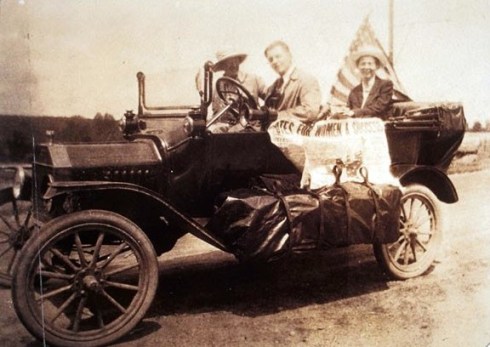Ever since that fateful night in early December 2017 when a representative of the Peabody Essex Museum disclosed that the vast majority of the collections in its Phillips Library, the major repository for Salem’s history, would be moved to a storage facility in Rowley, I’ve been both very critical of this decision and very focused on the institutional leadership which made it. This admission is no surprise to regular (likely suffering in silence) readers: much more so will be the praise that I’m actually going to heap on the PEM in this post! Just this past week the museum announced two new positions: a manager of historic structures and landscapes for its historic houses in Salem and a head librarian for the Phillips Library. From my perspective, both positions signal a renewed commitment to the Salem resources which the PEM inherited from its founding institutions, particularly the Essex Institute. I’ve never questioned the PEM’s stewardship of its assets: my major concern has been mothballing, so investment in these important areas is very welcome. The architectural position seems focused on preservation issues, but the new librarian will be charged with some big organizational and outreach responsibilities, including increasing the Library’s responsiveness to the needs of local, regional, national and international researchers, integrating it more fully into the Museum, and transforming the Phillips into an innovative and active intellectual hub supporting the overall mission and global scope of the PEM. All this and the long-awaited digitization plan! This is a very responsible position and the PEM should be commended for seeking to fill it.

 Challenges & Opportunities: The Head Librarian in Sam Walter Foss’s Song of the Library Staff (1906); “To the rescue. Many librarians believe computers are the only means to effectively cope with their bulging bookshelves” (1966). New York World-Telegram and Sun Newspaper Photograph Collection, Library of Congress.
Challenges & Opportunities: The Head Librarian in Sam Walter Foss’s Song of the Library Staff (1906); “To the rescue. Many librarians believe computers are the only means to effectively cope with their bulging bookshelves” (1966). New York World-Telegram and Sun Newspaper Photograph Collection, Library of Congress.
That said, I’m just not sure how the PEM is going to create the “innovative and active intellectual hub” it is referencing in this job description in a storage facility off Route One in Rowley, much less foster the community engagement that is referenced continually in all of its messaging. My continuing preoccupation with the relocation of the Phillips Library stems from outrage at the removal of Salem’s historical archives, but also confusion about how such a move aligns with the PEM’s own goals. I understand the PEM’s arguments about the logistics of conservation and digitization, but what about integration? How can the Library be integrated more fully with the Museum when the Library is in Rowley and the curators of the Museum—as well as the physical Museum itself—are in Salem? Perhaps the goal is a virtual/digital integration, but we all know that that’s a long way off for the PEM. Discussion of LAM (Libraries, Archives & Museums) integration has been evolving for over a decade, and the Head Librarian job description indicates awareness of this dialogue, but the PEM seems oddly out of touch with other cultural trends, namely the evolution (and rejuvenation in many cases) of libraries as places not only of collections but also myriad connections and the growth of a dynamic field and practice of public history which emphasizes a wider and more multi-faceted engagement with the past. The PEM is investing a lot of money in the restoration of the physical buildings which constitute the (former?) Phillips Library in Salem but what purposes—and who— will this space serve once it is finished?
 Past & Present: the Library of the American Academy in Rome in 1933 and today, “a perfect blend of the past with the contemporary demands of modern scholarship.”
Past & Present: the Library of the American Academy in Rome in 1933 and today, “a perfect blend of the past with the contemporary demands of modern scholarship.”
I understand that the h-word is anathema in the upper realms of the PEM but why ignore the demands of its host community, the interests of hundreds of thousands of visitors to Salem each year, as well as the strengths of its collections and its stated goals of “community engagement” by abandoning history? The answer can only lie in a very simplistic (and musty) understanding of what historical interpretation in the public realm constitutes these days: Colonial Williamsburg blinders if you will. Many of the PEM/PM Third Thursday events (now defunct), had historical aspects, as exemplified in its (also now defunct?) Phillips Library blog, Conversant. “History” is not all about the War of 1812 or even the Salem Witch Trials (I swear): it’s also about fashion, food, play, cross-cultural encounters, and golden ages, all of which the Peabody Essex Museum clearly embraces. History is about home, and housing: just imagine a PEM-initiated public history project about housing in Salem past, present and future similar to the 2016 symposium organized by the Cambridge Historical Society entitled “Housing for All?”. I can’t imagine anything more relevant, more engaging, and more reflective of the Museum + Library’s integrated resources.

 Before & After the Great Salem Fire of 1914: Housing on the northern side of Broad Street before the Fire and Mill Hill after, Phillips Library Digital Collections.
Before & After the Great Salem Fire of 1914: Housing on the northern side of Broad Street before the Fire and Mill Hill after, Phillips Library Digital Collections.












